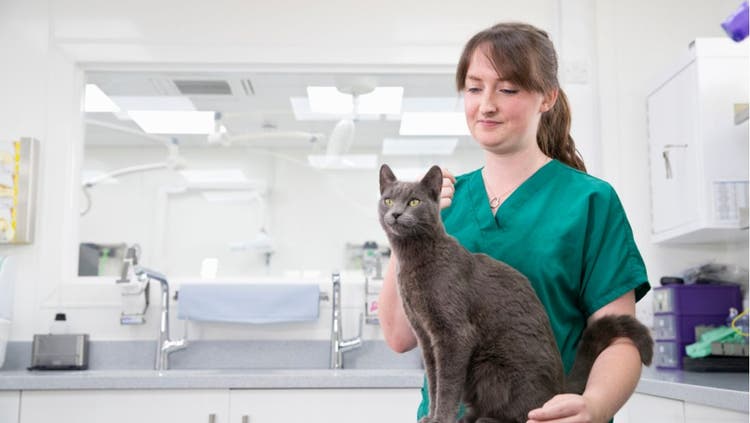
The #1 Cat Emergency Seen in Emergency Rooms
What is the most common cat condition seen in veterinary emergency rooms? Can you guess?
Most people guess that most emergency situations arise from trauma such as being hit by a car, a gunshot wound, cat bite wounds, falling out of a tree, and other urgent problems. That’s what most people think … but they’re wrong.
The number one reason cats are brought to veterinary emergency rooms is for vomiting.
How to Recognize a Cat Emergency
Symptoms of problems in cats include drooling, lip licking, and vomiting. Some cats will not eat when they are nauseated.
Vomiting can be a symptom of many different problems. Vomiting can be caused by something minor like a viral bug, food change, or something serious such as diabetes, cancer, or kidney disease.
Bloodwork, radiographs (x-rays) and ultrasound tests may be required to help determine the underlying cause. Minor problems can often be treated with medications to stop vomiting and fluids to improve hydration. More serious problems can require additional testing as well as hospitalization for various treatments and even surgery.
Learn more from our medical library article about vomiting in cats. Another very good article that covers what you can do at home is Home Care of the Vomiting Cat.
What You Can Do to Prepare for a Cat Emergency
- Make sure you know where your local emergency room is or how your vet deals with emergencies. Keep this information (phone number, hours, address and directions) handy. Some cat owners wonder when to call. Learn more with this article – When Should You Call the Emergency Vet Hotline? This article outlines reasons to worry such as a list of toxins that are a concern and dangerous symptoms such as straining to urinate that should prompt you to go to the veterinarian immediately.
- Know your cat’s history and about their current problem. Make sure you know your cat’s medical history and any medications that he is taking. The emergency vet will want to know when the vomiting started, how many times your cat vomited, what the vomit looked like, the last time your cat vomited and if there are any accompanying symptoms, such as lethargy, weakness or diarrhea. Observe your cat closely. If possible, take a sample of any diarrhea with you. This information can really assist the emergency veterinarian to better help you. For more information about how an emergency veterinary clinic works – go to What is an Emergency Vet?
- Call your veterinarian or emergency clinic to determine what they want you to do. Their staff will talk to you about your cat’s condition and recommend whether or not you should bring him in to be examined. If your cat has only vomited once, is now acting normal and has no diarrhea, they may give you the recommendation to wait a few hours and see if your cat vomits again. On the other hand, if your cat has been vomiting and is lethargic they may recommend you bring him in immediately.
Trained veterinary personal help you with common questions. Learn more about a Day in the Life of an Emergency Veterinarian.
To prevent problems, prevent your cat’s exposure to trash, table scraps, and other foreign objects. Buy only safe toys and ensure your cat does not chew on any objects around that house that he could swallow and be unable to digest or pass through his system. Cats are especially fond of string, yarn, ribbon, hair ties, and other linear-type foreign bodies. Make any food changes gradually over a period of several days.
What Will It Cost to Go to the ER with a Vomiting Cat?
Vomiting can be expensive to treat, depending on the underlying cause. It is not uncommon for basic treatment to run $175.00 to $300.00. More extensive care requiring tests, such as bloodwork, radiographs (x-rays), and hospitalization can run anywhere from $685.00 to $2,000.00. That’s a lot of money. That’s why I always tell my readers to consider pet insurance.